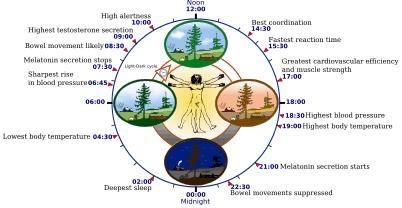Second wind
Second wind is a phenomenon in distance running, such as marathons or road running (as well as other sports), whereby an athlete who is too out of breath and tired to continue suddenly finds the strength to press on at top performance with less exertion. The feeling may be similar to that of a "runner's high", the most obvious difference being that the runner's high occurs after the race is over. Some scientists believe the second wind to be a result of the body finding the proper balance of oxygen to counteract the buildup of lactic acid in the muscles. Others claim second winds are due to endorphin production, while still others believe it to be purely psychological.
Documented experiences of the second wind go back at least 100 years, when it was taken to be a commonly held fact of exercise. The phenomenon has come to be used as a metaphor for continuing on with renewed energy past the point thought to be one's prime, whether in other sports, careers, or life in general.
Hypotheses

Second wind (sleep)
Second wind (or third wind, fourth wind, etc.), also occasionally referred to as the wake maintenance zone, is a sleep phenomenon in which a person, after a prolonged period of staying awake, temporarily ceases to feel drowsy, often making it difficult to fall asleep once it happens. They are the result of circadian rhythms cycling into a phase of wakefulness. For example, many people experience the effects of a second wind in the early morning even after an entire night without sleep because it is the time when they would normally wake up.
While most "winds" coincide with the 24-hour cycle, those experiencing extended sleep deprivation over multiple days have been known to experience a "Fifth day turning point".
Characteristics
The "second wind" phenomenon may have evolved as a survival mechanism as part of the fight or flight response, allowing sleep-deprived individuals briefly to function at a higher level than they would without more sleep.
Performance enhancing
One study presented a series of tasks of increasing difficulty to 16 young adults who had not slept in 35 hours and observed heightened activity in several brain regions using magnetic resonance imaging. Researcher Sean P.A. Drummond commented that the ability to summon a second wind allowed them to "call on cognitive resources they have that they normally don't need to use to do a certain task". (He also noted that their performance, though an improvement considering their state of sleep deprivation, were below what it would be had they slept.)
Second Wind
A second wind is an exercise phenomenon.
A second wind (sleep) is also a sleep phenomenon.
Second Wind may refer to:
Films
Music
Albums
Songs
Podcasts:

